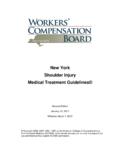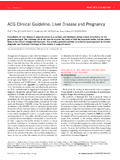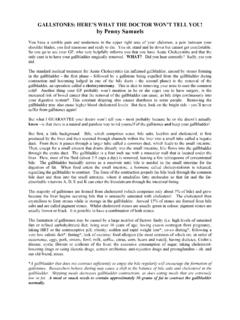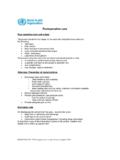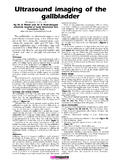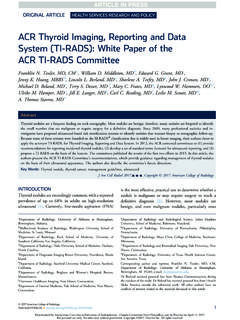Transcription of EMERGENCY ULTRASOUND CODING AND …
1 EMERGENCY ULTRASOUND CODING AND reimbursement ULTRASOUND Section American College of EMERGENCY Physicians Contributors Stephen Hoffenberg, MD, FACEP Vivek S. Tayal, MD, FACEP Anthony J. Dean, MD Gary Quick, MD, FACEP Evelyn E. Cardenas, MD, FACEP Marilyn Bromley, RN 2 Table of Contents I Introduction II Background III CPT CODING of ULTRASOUND Procedures A. Current Procedural Terminology (CPT) B. Limited vs Complete ULTRASOUND Studies C. CPT Modifiers D. CPT Codes for ULTRASOUND Procedures IV ICD-9 CODING and Medical Necessity A. ICD-9 CODING B. Medical Necessity V ULTRASOUND Procedure Documentation A. Documentation Background B. Documentation and Image Archiving C. Documentation Requirements VI Payor Policy A. Payor Policy Background B. Covered Services and Non-Covered Services C. CODING Edits VII Frequently Asked Questions (FAQs) Acknowledgments: The authors wish to thank the following persons for assistance in preparation of this material: Dennis M.
2 Beck, MD, FACEP; Peter L. Sawchuk, MD, JD, MBA; Mason A. Smith, MD, FACEP; and David McKenzie, Staff Liaison, reimbursement and CODING and Nomenclature Advisory Committees. 3 I Introduction As ULTRASOUND technology has been incorporated into the practice of EMERGENCY medicine, emphasis has appropriately been placed upon ULTRASOUND program development, research and education. Practicing EMERGENCY physicians, in both community and academic settings, have become credentialed to perform ULTRASOUND examinations and have integrated essential ULTRASOUND studies into their clinical practice. Little guidance, however, has been provided to the EMERGENCY physician in understanding the key elements of the CODING or reimbursement for ULTRASOUND procedures. The goal of this paper is to assist EMERGENCY physicians in understanding correct and compliant CODING , appropriate documentation, payor policy and issues surrounding claims submission for EMERGENCY physician ULTRASOUND examinations they are currently performing or may anticipate performing.
3 This paper addresses the following CODING and reimbursement issues: Identification of the ULTRASOUND procedures performed in your department by the CPT codes and CPT code modifiers that accurately describe those ULTRASOUND procedures Identification of the medical indications for the use of each ULTRASOUND procedure performed, represented by ICD-9 codes, that accurately reflect the symptoms, signs, diagnosis and/or abnormal diagnostic tests that necessitate ULTRASOUND procedures Developing medical record documentation methods that accurately identify procedures performed, and appropriate procedure results reporting. These documentation elements serves as the basis for applying the correct CPT and ICD-9 codes for the individual patient Developing a compliant approach to claims submission that recognizes payor policies including covered services, CODING edits, CODING combinations and evaluation of claims denials. Note: The American College of EMERGENCY Physicians makes every effort to ensure that contributors to College-sponsored publications are knowledgeable authorities in their fields.
4 Readers are nevertheless advised that the statements and opinions expressed in this series are provided as guidelines and should not be construed as College policy unless specifically cited as such. The College disclaims any liability or responsibility for the consequences of any actions taken in reliance on those statements or opinions. The materials contained herein are not intended to establish policy, procedure, or a standard of care. Finally, this paper addresses CODING and reimbursement policy and regulation that are subject to change, vary by region and vary by payor. The reader is advised to confirm that the material addressed here is current for their specific location. II Background ULTRASOUND is a well-established medical imaging modality utilized by a wide variety of medical specialties. The medical literature continues to demonstrate a growing recognition of ULTRASOUND s clinical utility for both diagnostic imaging and the guidance of difficult or high-risk procedures.
5 Education in the use of ULTRASOUND has been integrated into the residency training of a variety of medical specialties, including EMERGENCY medicine. Technologic improvements in ULTRASOUND equipment have made systems more portable, easier to use at the bedside and of higher image quality, thus, enhancing the accuracy of diagnosis and the safety of procedure performance. The performance of ULTRASOUND examinations and the interpretation of ULTRASOUND images is within the scope of practice of the EMERGENCY medicine specialist as outlined in the Use of ULTRASOUND Imaging by EMERGENCY Physicians (ACEP policy number 400121). The policy promotes the immediate availability of ULTRASOUND examination and interpretation on a 24-hour-a-day basis for ED patients and identifies EMERGENCY ULTRASOUND performance as a standard EMERGENCY physician skill that should be 4 delineated in the EMERGENCY physician s clinical privileges. In addition, the policy supports dedicated ULTRASOUND equipment within the EMERGENCY department as being optimal for patient care.
6 Bedside ultrasonography is included among the Procedures and Skills Integral to the Practice of EMERGENCY Medicine in the Model of the Clinical Practice of EMERGENCY Medicine (ACEP policy number 400297; Annals of EMERGENCY Medicine June 2001). Finally, an authoritative overview of the status of EMERGENCY ultrasonography can be found in the recently released ACEP EMERGENCY ULTRASOUND Guidelines-2001, and is available on the ACEP website ( ). These ACEP EMERGENCY ULTRASOUND Guidelines 2001 address the scope of practice, the primary indications for ULTRASOUND in the EMERGENCY setting, procedural guidance indications for ULTRASOUND , training, credentialing, quality improvement and future potential uses for EMERGENCY ULTRASOUND . It is clear that EMERGENCY physicians who perform EMERGENCY ULTRASOUND should be both credentialed to perform those examinations and that EMERGENCY physicians should be appropriately reimbursed for providing EMERGENCY ULTRASOUND procedures in the EMERGENCY department.
7 (ACEP policy Use of ULTRASOUND Imaging by EMERGENCY Physicians #400121) Agreement with these basic concepts is reflected in existing AMA Policy supporting reimbursement for ULTRASOUND imaging performed by appropriately trained physicians ( reimbursement for Office-Based or Outpatient ULTRASOUND Imaging) and in AMA policy affirming that the granting of privileges to perform ULTRASOUND imaging in a hospital setting is a function of the hospital medical staff and that such criteria should be based on specialty-specific training standards ( Privileging for ULTRASOUND Imaging). For a more in depth understanding of EMERGENCY ULTRASOUND procedures and the CODING of these procedures the reader is referred to the following publications: ACEP EMERGENCY ULTRASOUND Guidelines 2001 ( ) Use of ULTRASOUND Imaging by EMERGENCY Physicians (Policy number 400121; ) Current Procedural Terminology CPT 2001 (AMA Press; ) Physician ICD-9-CM (Medicode; ) Principles of CPT CODING (AMA Press; ) Healthcare Fraud and Abuse: A Physicians Guide to Compliance (AMA Press; ) Medicare Correct CODING and Payment Manual for Procedures and Services (St.)
8 Anthony Publishing; ) Medicare RBRVS: The Physicians Guide 2001 (AMA Press; ) ULTRASOUND Coders User s Guide (American College of Radiology; ) III CPT CODING A. CPT Physician s Current Procedural Terminology (CPT) is a system of descriptive terms and identifying codes for the reporting of medical, surgical, and diagnostic services. This system provides a communication tool for medical care and utilization review as well as a claim-processing tool utilized by both governmental and private payors. CPT codes describe what services have been performed. The Evaluation and Management (E/M) codes 99281-99285 are the codes for cognitive services most commonly utilized by and familiar to EMERGENCY physicians. Procedure codes describe the performance of surgical or diagnostic procedures, for example, 12001 is the CPT code for the repair of a simple laceration < cm. Multiple CPT codes may be used for the same patient, such as an E/M code plus a laceration repair procedure code for a patient that was evaluated for syncope and suffered a scalp laceration resulting from the fall.
9 5 Most ULTRASOUND procedures performed by EMERGENCY physicians are accurately described by current CPT codes and generally may be coded in addition to E/M codes. CPT codes commonly used by EMERGENCY physicians for ULTRASOUND applications are catalogued below (see III. D. CPT Codes for ULTRASOUND Procedures). In some cases multiple ULTRASOUND codes may be utilized for the same patient. The precise selection or matching of the code to the procedure is based upon CPT definition, payor policy, and Medicare rules and regulations. Finally, all physicians, regardless of specialty utilize the same CPT codes. For example an internist, surgeon, family practitioner or EMERGENCY physician might utilize the critical care code 99291. A limited ULTRASOUND of the pregnant uterus, performed by an obstetrician-gynecologist, a family practitioner, a radiologist or an EMERGENCY physician would all be coded 76815. B. Limited Vs Complete ULTRASOUND Studies CPT codes for ULTRASOUND examinations are considered to be complete studies unless specified as limited studies in their code definitions.
10 A complete study, as defined by the CPT, is one in which an attempt is made to visualize and diagnostically evaluate all of the major structures within the anatomic description. A limited study would address only a single quadrant, a single diagnostic problem or might be a follow-up examination. Examples of a complete study would be an abdominal ULTRASOUND 76700 as opposed to a limited abdominal ULTRASOUND 76705. The former would represent the type of abdominal ULTRASOUND typically performed by a consultant such as a radiologist. The complete 76700 examination of the abdomen would evaluate all major abdominal structures, and organ-specific findings would be reported, eg, liver, pancreas, and spleen. The limited abdominal examination 76705 would be used to describe the ULTRASOUND examination of a more focused diagnostic problem, eg, the presence or absence of free intraperitoneal fluid in the clinical setting of blunt trauma. EMERGENCY physicians most frequently conduct limited ULTRASOUND examinations in which a focused diagnostic problem is addressed and diagnostic results are used to guide subsequent evaluation or treatment.

